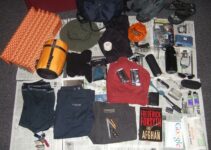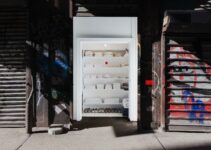Are you prepared for an emergency? One of the most important things to consider is your emergency food supply resources. In this article, we will explore what to buy, how much to store, and when to rotate your emergency food supplies.
Emergency food supply resources refer to the food items and supplies that you store for use during emergencies. These supplies are essential for ensuring that you and your family have access to food in case of a natural disaster, power outage, or any other crisis situation that may disrupt the supply of food.
The importance of having an emergency food supply cannot be overstated. During an emergency, you may not be able to access the grocery store, and even if you can, the store may be out of stock or have limited supplies. Having an emergency food supply ensures that you have access to food when you need it the most.
Benefits of emergency food supply resources include peace of mind, cost savings, and convenience. By having an emergency food supply, you can avoid panic buying during an emergency, which often leads to overpaying for scarce supplies. You can also save money by buying in bulk and taking advantage of sales. Additionally, having an emergency food supply means you don't have to worry about cooking or preparing food from scratch during a crisis, which can be time-consuming and stressful.
Creating an Emergency Food Supply
When planning an emergency food supply, there are several factors to consider, including the size of your household, the length of the emergency, and any dietary restrictions or preferences.
Ideal foods for emergency situations include non-perishable foods, foods with long shelf-life, foods with high nutritional value, and easy to prepare foods. Non-perishable foods are foods that don't require refrigeration and can be stored at room temperature. Foods with long shelf-life are foods that can last for several months or even years without spoiling. Foods with high nutritional value are foods that provide essential nutrients and energy. Finally, easy to prepare foods are foods that require little to no cooking or preparation.
Some examples of ideal emergency foods include canned beans, peanut butter, nuts, dried fruits, canned meats, energy bars, crackers, and pastas. It's also important to include a variety of foods from different food groups, such as grains, proteins, fruits, and vegetables.
Customizing your food supply according to dietary restrictions and preferences is also crucial. If you or someone in your household has a food allergy or intolerance, be sure to exclude any foods that may cause an adverse reaction. Similarly, if you have vegetarian or vegan preferences, make sure to include plant-based protein sources in your food supply.
Types of Emergency Food Supply Resources
There are various types of emergency food supply resources available, each with its pros and cons.
Pre-packaged emergency food kits contain a variety of food items that are designed to provide a balanced diet for a certain number of people for a specified amount of time. These kits are convenient and easy to store, but they can be expensive and may not meet everyone's dietary needs.
Freeze-dried and dehydrated foods are foods that have been dried and have had most of their water content removed. This makes them lightweight and easy to store, and they have a long shelf-life. However, they can be expensive and may not be as palatable as fresh food.
Canned goods are an excellent choice for emergency food supplies as they have a long shelf-life, are easy to store, and are relatively inexpensive. However, they can be heavy and take up a lot of space.
MREs (Meals Ready to Eat) are individual meals that are designed to provide all the necessary nutrients for one meal. They are easy to store and require no preparation, but they can be expensive and may not be as palatable as fresh food.
DIY emergency food supplies are food items that you choose and store on your own. This option is customizable and affordable, but it requires more planning and preparation on your part.
Storing and Preserving Emergency Food Supplies
Proper ways to store and preserve emergency food supplies include temperature and humidity control and protection from pests. It's essential to store your emergency food supplies in a cool, dry, and dark place, such as a pantry or basement. Avoid storing your supplies in places that are exposed to sunlight or high temperatures, such as an attic or garage.
Pests, such as rodents and insects, can quickly destroy your emergency food supply. To protect your supplies, store them in airtight containers, such as plastic bins or buckets, and consider using pest traps or deterrents.
Tips for keeping emergency food supplies fresh and safe to eat include proper packaging, rotation system, labeling, and recommended storage locations. Proper packaging involves using airtight containers to prevent moisture and pests from entering. A rotation system ensures that you use the oldest supplies first, so they don't expire. Labeling your supplies with the date of purchase and expiration date helps you keep track of when to rotate and replace supplies. Recommended storage locations are cool, dry, and dark places that are easy to access but not in the way.
Common mistakes to avoid when storing emergency food supplies include exposure to sunlight, moisture, and mixing old and new supplies. It's important to keep your supplies away from sunlight, as it can cause the food to spoil quickly. Moisture can also cause food to spoil, so it's important to keep your supplies in a dry place. Mixing old and new supplies can cause confusion about what to use first, so it's important to keep your supplies organized and labeled.
How to dispose of expired emergency food supplies depends on the type of food. Canned goods and non-perishable items can be donated to food banks or shelters. Freeze-dried and dehydrated foods can be composted. MREs and perishable foods should be thrown away.
Personal Story: Learning the Importance of Customizing Your Emergency Food Supply
When I was first starting to build my emergency food supply, I made the mistake of not taking into account my family's specific needs and preferences. I purchased pre-packaged emergency food kits that were advertised as having a long shelf life and being easy to prepare. However, when I presented them to my family, I found that many of the items included were not things that we normally ate, and some of them contained ingredients that my children were allergic to.
I quickly realized that I needed to customize my emergency food supply to fit our family's dietary restrictions and preferences. I started by making a list of the foods that we regularly ate and enjoyed, and then made sure to include non-perishable versions of those items in my emergency food supply. I also made sure to include easy-to-prepare items that my children could safely eat.
Now, I feel much more confident in my emergency food supply, knowing that we have foods that we enjoy and can safely eat in the event of an emergency. I encourage others to take the time to customize their emergency food supply as well, as it can make a big difference in the comfort and well-being of your family during a crisis.
Maintaining an Emergency Food Supply
| Household Size | Recommended Amount of Emergency Food Supply |
|---|---|
| 1 person | 3-day supply (9 meals) |
| 2 people | 3-day supply (18 meals) |
| 3 people | 3-day supply (27 meals) |
| 4 people | 3-day supply (36 meals) |
| 5 people | 3-day supply (45 meals) |
| 6 people | 3-day supply (54 meals) |
| 7 people | 3-day supply (63 meals) |
| 8 people | 3-day supply (72 meals) |
The recommended amount of emergency food supplies varies depending on the size of your household. The table above provides a general guide for how much food to store for a 3-day emergency. It's important to note that these amounts are only recommendations, and you should customize your emergency food supply based on your family's specific needs and preferences. Additionally, it's recommended to have a 2-week supply of emergency food on hand for extended emergencies.
When calculating how much food to store, consider the number of meals you need per day, the number of people in your household, and any dietary restrictions or preferences. It's also important to include a variety of foods from different food groups, such as grains, proteins, fruits, and vegetables.
By having the recommended amount of emergency food supplies on hand, you can ensure that you and your family have access to food during an emergency. Remember to rotate and replenish your supplies regularly to ensure that they remain fresh and safe to eat.
Maintaining an emergency food supply involves regular checks to ensure the emergency food supply is still usable, monitoring expiration dates, and replenishing supplies when necessary.
Rotating and replenishing emergency food supplies involves using the first in, first out (FIFO) system, creating a schedule for replenishing supplies, and using and replacing expired supplies. The FIFO system ensures that you use the oldest supplies first, so they don't expire. Creating a schedule for replenishing supplies helps you keep track of when to buy new supplies. Using and replacing expired supplies ensures that you always have fresh, safe-to-eat food available.
Updating your emergency food supply based on changing needs involves re-evaluating your food supply periodically and making changes based on your family's dietary needs and preferences.
Conclusion
In conclusion, having emergency food supply resources is essential for ensuring that you and your family have access to food during an emergency. When creating an emergency food supply, it's important to consider factors such as the size of your household, the length of the emergency, and any dietary restrictions or preferences. There are various types of emergency food supply resources available, each with its pros and cons.
Properly storing and preserving emergency food supplies, maintaining an emergency food supply, and updating it based on changing needs are crucial for ensuring that your emergency food supply is always usable and safe to eat.
Related topics for further reading include emergency water supply resources, emergency cooking and heating methods, and emergency preparedness kits. By being prepared for emergencies, you can reduce stress and increase your chances of survival.
Frequently Asked Questions
Who needs an emergency food supply?
Everyone should have an emergency food supply as it can help during natural disasters and emergencies.
What kind of food should be in an emergency supply?
Non-perishable foods such as canned goods, dried fruits, and energy bars are recommended.
How long can emergency food last?
Most emergency food supplies have a shelf life of 25 years or more, making them ideal for long-term storage.
Who can benefit from emergency food supply resources?
Anyone can benefit from them, especially those living in areas prone to natural disasters or those who travel frequently.
What if I have dietary restrictions?
There are specialized emergency food supplies that cater to specific dietary needs such as gluten-free or vegetarian.
How can I make sure my emergency food supply is ready?
Regularly check expiration dates and rotate out items that are close to expiring to keep your supply fresh.
The author of this guide has over a decade of experience in emergency preparedness and disaster response. They hold a Master's degree in Emergency Management and have worked with various organizations, including FEMA and the American Red Cross.
In their work, the author has seen firsthand the importance of having a well-stocked emergency food supply. They have conducted extensive research and consulted with experts in the field to provide the most up-to-date and accurate information on what to buy, how much to store, and when to rotate your emergency food supplies.
Their recommendations are based on scientific studies and industry standards, and they provide practical advice for individuals and families looking to prepare for emergencies. The author understands the unique challenges of emergency preparedness and has a passion for helping others be better prepared for unexpected events. Through this guide, they hope to empower readers to take control of their own emergency food supply and feel confident in their ability to weather any storm.





